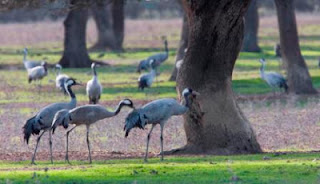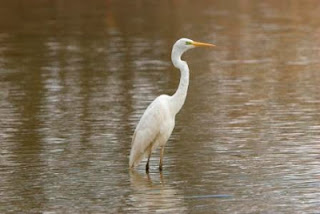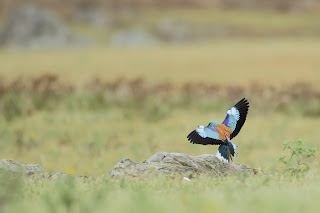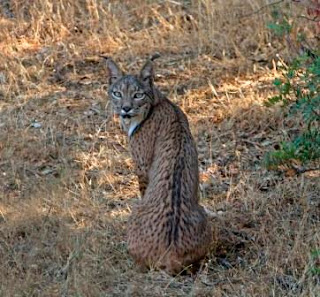Crane counts and other news

I had settled down comfortably: camp chair, warm clothing, the trunk of the great encina (Holm Oak) behind me, its evergreen canopy above, hiding me from view. I was sitting in the dehesa at the end of the afternoon, with a view of the small Tozo reservoir in front of me. My aim was to be as well-hidden as possible, the reason: to watch and hopefully count the Common Cranes coming to roost at this small water body, surrounded by the dehesa of encina , providing the acorns which the wintering cranes are sharing with the free-range Iberian pigs. One of my activities in winter is to participate in surveys and counts of birds. There are surveys too in the spring, but with our birding holiday business at its peak at that time of the year, it is usually difficult to commit time to volunteer for survey work as well. Winter is different and it feels good to be part of a band of like-minded birders, gathering information which is then pooled, analysed and contributes to our wider understa...














